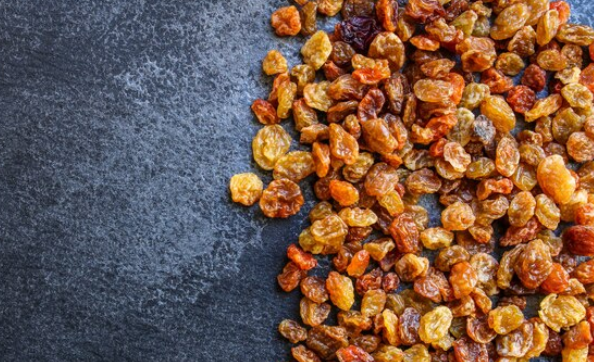Oil Coating Methods in Sultana Raisins: Comparing Paraffin, Vegetable Oils, and Their Residue Risks
Oil coatings are a standard treatment for sultana raisins, especially in commercial processing lines. They enhance visual appeal, prevent clumping, and extend shelf life. But for international buyers and importers, the type of oil used—paraffin or vegetable—can significantly impact quality, compliance, and health risks. Understanding the differences is essential for making informed procurement decisions.
Understanding Why Oil Coatings Are Applied
Sultana raisins are naturally sticky due to their high sugar content. When left uncoated, they tend to clump together, lose shine, and may develop unwanted moisture absorption. Coating with a thin layer of oil solves these problems and facilitates handling, packaging, and storage during bulk export.
However, the choice of oil matters. Each coating method introduces different chemical properties and regulatory implications, especially concerning food safety and residue levels.
Comparing Paraffin Wax and Vegetable Oil Coatings
Paraffin wax is a petroleum-derived substance commonly used in food contact materials. It is known for its high stability, low cost, and long-lasting shine. Yet it raises concerns about mineral oil hydrocarbons (MOSH) and aromatic hydrocarbons (MOAH), which are potentially harmful if consumed in excess. While regulations allow up to 5 mg/kg of paraffin migration in food, buyers must monitor compliance through lab testing and supplier documentation.
Vegetable oils, such as refined soybean oil or Durkex 500, offer a more natural and consumer-friendly alternative. They do not carry the same MOSH/MOAH risks, but they are more prone to oxidation. This can lead to changes in flavor, faster degradation during storage, and the need for stricter quality controls in warm or humid environments.
our product: dark Sultana raisins
Key Differences in Performance and Risk
1. Shelf Life and Oxidation
Paraffin coatings remain stable over longer periods. In contrast, vegetable oils may oxidize faster, especially if the product is stored improperly or exposed to sunlight.
2. Taste and Odor
Paraffin is inert and tasteless. Some vegetable oils may introduce subtle flavors or odors depending on the type and stability of the oil used.
3. Health and Residue Concerns
MOSH/MOAH contamination from paraffin is under increasing scrutiny, particularly in the EU. Vegetable oils generally pose fewer toxicological concerns but require proper refining and sourcing to avoid rancidity and microbial growth.
Regulatory Framework and Testing
Importers should be aware of international standards:
- EFSA: sets strict limits for food contact materials including paraffin.
- FDA and USDA: oversee residue limits in the U.S. and offer guidance on post-harvest treatments.
- National labs: recommend regular residue testing using QuEChERS or similar methods for both coating types.
3-Step Checklist for Importers
1. Request Documentation
Always ask for a certificate of analysis (CoA) and SDS sheets for any coated raisin product.
2. Confirm Regulatory Limits
Ensure that residue levels for paraffin (e.g., MOSH) are within EFSA or FDA guidelines.
3. Choose According to Market
Paraffin coatings may suit regions with relaxed regulations, while vegetable oils are ideal for clean-label markets and health-conscious consumers.
Final Thoughts for Buyers
Choosing between paraffin and vegetable oil coatings comes down to market needs, health standards, and cost-performance balance. Both have advantages, but importers must assess which option aligns best with safety expectations and customer preferences.
FAQs About Oil-Coated Sultana Raisins
What is the purpose of oil coating on raisins?
Oil coatings prevent stickiness, reduce moisture absorption, and improve appearance for easier handling and transport.
Are paraffin-coated raisins safe to eat?
Yes, when paraffin is food-grade and within regulated migration limits. Testing for MOSH/MOAH residues is important.
What are MOSH and MOAH in raisins?
They are types of mineral oil hydrocarbons found in paraffin. Excess intake can pose health risks, prompting stricter regulation.
Can I import raisins with vegetable oil coatings into Europe?
Yes, as long as the oil used is food-grade, oxidatively stable, and documented through proper certification.
How do I test for residues in coated raisins?
Use certified laboratories that offer testing through methods like QuEChERS, which detect both oil residues and pesticides.

